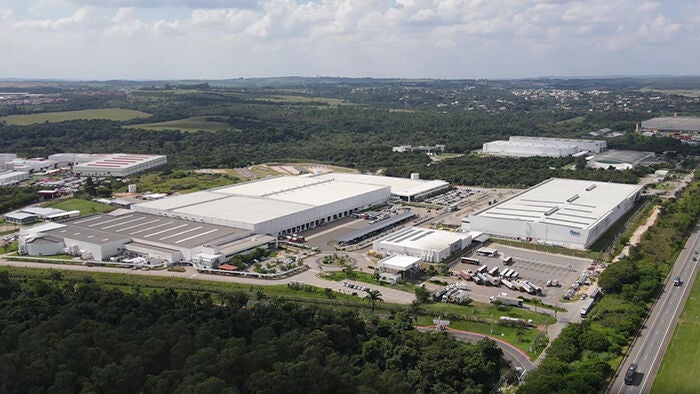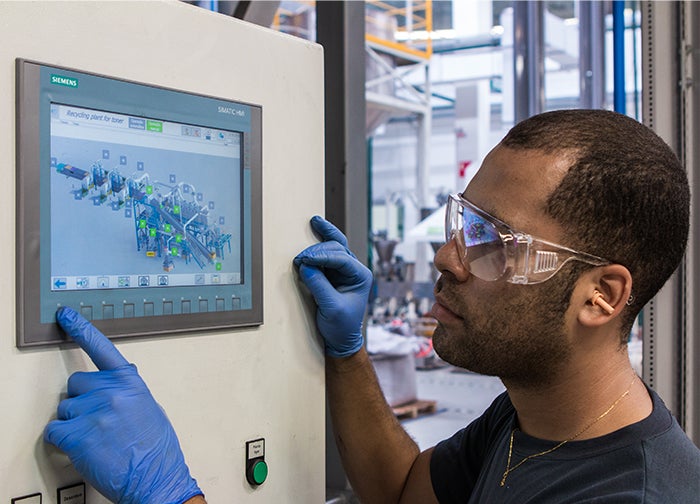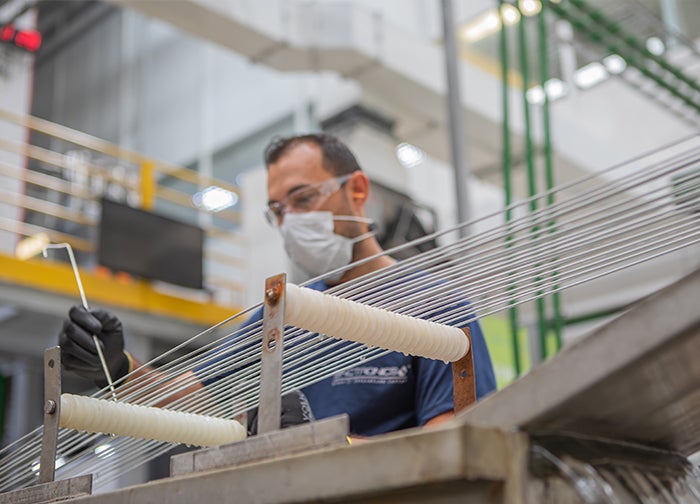
Im Juli 2025 kehrte ich nach Brasilien zurück – 25 Jahre nach meinem ersten Besuch als junge Führungskraft, die einen der vielversprechendsten Märkte der Welt kennenlernen wollte. Damals begegnete ich einem Land voller Ambitionen, Kreativität und wirtschaftlichem Potenzial, das aber auch in bürokratische Hürden, Volatilität und eine schwierige Orientierung mündete.

Eine Generation später ist der Ehrgeiz noch immer da. Und die Chancen auch. Doch viele der strukturellen Herausforderungen sind noch immer dieselben.
Ein Markt, der zu groß ist, um ihn zu ignorieren
Mit einer Bevölkerung von über 213 Millionen und einem prognostizierten BIP von 1TP352,13 Billionen ist Brasilien das Schwergewicht Lateinamerikas. Es ist das pulsierende Verbraucherzentrum der Region, ein Produktionszentrum mit ausgeprägter Ingenieurskunst und ein Tor zum breiteren südamerikanischen Markt. Wenn Sie in diesem Teil der Welt wachsen möchten, ist Brasilien eine unverzichtbare Option.
Und dennoch gehen globale Unternehmen weiterhin vorsichtig damit um – oder gar nicht. Warum?
Das brasilianische Geschäftsparadoxon
Brasilien ist ein Paradoxon. Es ist ein Land mit Weltklasse-Talenten, fortschrittliche Fertigungsmöglichkeitenund eine strategische geografische Lage – und dennoch wird es immer wieder zu den Standorten gezählt, in denen es am schwierigsten ist, Geschäfte zu machen.
Meiner Erfahrung nach gibt es sechs Herausforderungen, die selbst die am besten vorbereiteten globalen Unternehmen immer wieder ins Stolpern bringen:
1. Steuergesetze, die mehr verwirren als klären
Man kann es nicht beschönigen: Brasiliens Steuersystem gehört zu den kompliziertesten der Welt. Vielschichtige Steuern auf Bundes-, Landes- und Kommunalebene – viele davon überlappend – machen die Gestaltung der Lieferkette zu einem strategischen Schachspiel.
Aus meiner Sicht ist der Weg zum Erfolg, die Einhaltung der Steuervorschriften als Teil Ihrer Lieferkette Architektur, nicht nur eine Finanzfunktion. Unternehmen, die diese Architektur erfolgreich meistern, kombinieren lokale Steuerexpertise mit digitalen Compliance-Systemen, die sich in Echtzeit anpassen, sodass regulatorische Änderungen weder Produktions- noch Lieferpläne stören. Bei Flex integrieren unsere brasilianischen Niederlassungen Steuerinformationen direkt in Planungs- und Logistiktools, sodass regulatorische Änderungen weder die Produktion behindern noch die Lieferung verzögern.
2. Arbeitsgesetze, die die Flexibilität einschränken
Die Beschäftigungsvorschriften in Brasilien sind starr, was Anpassungen des Personalbestands oder die Modernisierung der Arbeitsstrukturen erschwert. Für Unternehmen, die in den Markt eintreten, kann es so aussehen, als ob ihre Agilität als Erstes verloren geht.
Meiner Erfahrung nach liegt der Erfolg darin, Abläufe so zu gestalten, dass sie den Compliance-Anforderungen entsprechen und gleichzeitig Flexibilität ermöglichen. Dies bedeutet oft Investitionen in die Personalentwicklung, digitale Planungs- und Sicherheitssysteme sowie proaktives Mitarbeiterengagement, um ein Arbeitsumfeld zu schaffen, das sowohl konform als auch anpassungsfähig ist.
3. Währungsvolatilität
Der brasilianische Real ist starken Schwankungen ausgesetzt, was die Preisgestaltung und Prognose erschwert.
Der Schlüssel liegt darin, Ihre Beschaffungs- und Produktionskapazitäten in Brasilien zu erweitern, um Währungsschwankungen weniger ausgesetzt zu sein. In Kombination mit Multi-Währungsplanung und intelligenten Absicherungsstrategien bleiben die Kosten auch dann planbar, wenn die realen Kosten alles andere als vorhersehbar sind.
4. Geografischer Umfang und Infrastrukturlücken
Das riesige Gebiet und die ungleichmäßige Infrastruktur Brasiliens können die Logistik beeinträchtigen, insbesondere für Unternehmen, die mehrere Regionen bedienen.
Die Unternehmen, die hier erfolgreich sind, verlagern Produktion und Vertrieb in die Nähe ihrer Endmärkte und reduzieren so die Transportwege. Sie kombinieren dies mit einer fortschrittlichen Logistikplanung, um trotz infrastruktureller Herausforderungen einen effizienten Produkttransport sicherzustellen. Im Fall von Flex ermöglichen uns die Standorte in Manaus, Jaguariúna und Sorocaba – alle nur fünfzehn Minuten von einem großen Flughafen entfernt – Folgendes: Regionalisierung der Produktion und die Lieferzeiten im ganzen Land zu verkürzen.
5. Umweltvorschriften
Brasilien setzt wichtige, aber komplexe Umweltgesetze durch, die alles von Emissionen bis zur Abfallentsorgung abdecken. Die Einhaltung ist obligatorisch, und die Kundenanforderungen steigen ständig.
Wichtig ist hier vor allem das Verständnis, dass Nachhaltigkeit nicht nur ein Zusatzprodukt, sondern auch ein fester Bestandteil des Produktdesigns und der Betriebsabläufe ist. Die zukunftsorientiertesten Hersteller nutzen Kreislaufwirtschaft und umweltfreundliche Fertigung, um sowohl die Vorschriften einzuhalten als auch sich auf dem Markt zu differenzieren.
6. Innovationsengpässe
Brasilien verfügt zwar über ein dynamisches Startup-Ökosystem und staatliche Maßnahmen zur Förderung von Innovationen – wie etwa das Informatikgesetz und das Programm „New Industry Brazil“ –, doch Herausforderungen wie Bürokratie und eingeschränkter Zugang zu Finanzierungen stellen nach wie vor Hindernisse für die Weiterentwicklung von F&E-Initiativen dar.
Um dieses Problem zu lösen, nutzen wir bestehende F&E-Netzwerke, anstatt isoliert zu arbeiten. Partnerschaften mit Universitäten, Forschungsinstituten und Regierungsprogrammen beschleunigen die Entwicklung und helfen, regulatorische Hürden zu überwinden. Unsere Zusammenarbeit mit dem gemeinnützigen F&E-Institut FIT hat es uns ermöglicht, die Markteinführungszeit für neue, in Brasilien entwickelte Produkte zu verkürzen.
Warum ich an Brasilien glaube: Eine von den Menschen getragene Zukunft

Trotz aller Herausforderungen bleibt Brasilien einer der vielversprechendsten Standorte der Welt für Produktion und Expansion.
Warum? Weil das größte Kapital des Unternehmens gleichzeitig auch das am meisten übersehene ist: seine Mitarbeiter.
Die Belastbarkeit, Kreativität und technischen Fähigkeiten sind hier unübertroffen. Vom Ingenieur bis zum Bediener sind die Arbeitskräfte Brasiliens Weltklasse.
Immer wenn ich in Sorocaba eine Linie ablaufe oder in Jaguariúna eine Baustellenbesichtigung durchführe, wird mir bewusst, wie viel Einfallsreichtum und Problemlösungstalent hier vorhanden sind. Diese Teams erfüllen nicht nur die Standards, sie übertreffen sie sogar.
Mein Fazit: Brasilien ist nicht einfach, aber es lohnt sich
Geschäfte in Brasilien zu machen ist komplex. Es braucht Geduld, Vorbereitung und lokales Know-how, um erfolgreich zu sein. Aber für Unternehmen in industrielle Ausrüstung und Unterhaltungselektronik, insbesondere für diejenigen, die Lateinamerika beliefern oder ihre Lieferkette diversifizieren möchten, ist dies eine Chance, die es zu nutzen gilt.
Der Schlüssel liegt in Partnerschaften. Allein kann man in Brasilien nicht erfolgreich sein. Man braucht Partner, die das Terrain kennen, die Komplexität des Steuer- und Arbeitsrechts beherrschen und die Innovationskraft des Landes stärken können. Ich habe das aus erster Hand erlebt.

Durch die Zusammenarbeit von Flex mit MIT und der Bezeichnung unseres Standorts Sorocaba als „lebendes Labor“ wenden wir KI, Automatisierung und Lösungen auf Systemebene an, um die Fertigung neu zu erfinden.
Programme wie Sinctronics, unser integriertes Ökosystem der Kreislaufwirtschaft, zeigt, wie Nachhaltigkeit in Brasilien zu einem echten Wettbewerbsvorteil werden kann.
Und dies sind nur einige von unzähligen Beispielen dafür, was möglich ist, wenn Talent, Innovation und Strategie zusammenpassen.
Auch 25 Jahre später glaube ich noch immer an Brasiliens Versprechen. Nicht, weil es einfach ist, sondern weil es strategisch ist. Unternehmen, die Brasilien erfolgreich nutzen, erhalten nicht nur Zugang zum Markt, sondern auch einen Wettbewerbsvorteil.


